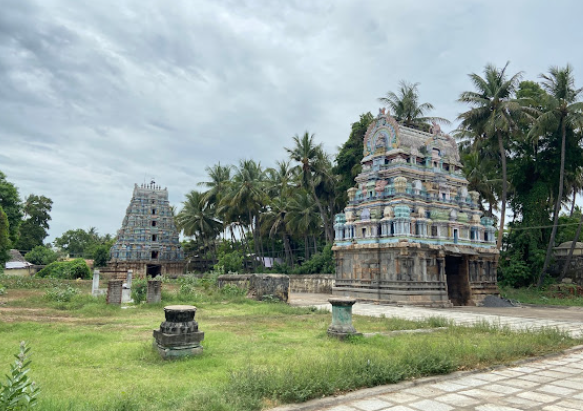- This is the 104th Thevara Paadal Petra Shiva Sthalam and 50th Sthalam on the north side of river Kaveri in Chozha Nadu.
- The place and the temple are on the northern banks of river Kaveri. This is one of the Saptasthana temples and 2nd associated with Thiruvaiyaru.
- Apathsahayar Temple, Thirupazhanam is a Hindu temple dedicated to Shiva located in Thirupazhanam near Thiruvaiyaru, Tamil Nadu, India. The presiding deity is revered in the 7th century Tamil Saiva canonical work, the Tevaram, written by Tamil poet saints known as the nayanars and classified as Paadal Petra Sthalam. The temple is counted as the earliest of all Chola temples. Thala Virutcham : Kathali (plantain), Vilwa Theertham : Mangala Theertham (not existing now), Cauvery

- Once upon a time there was a brahmin kid named Susarithan who lost his parents and in the search of peace he started a pilgrimage tour. That kid stayed one night at thirupazhanam village.
- That night, Yama Raja appeared in his dreams and told him that he will die on the 5th day from today.
- The kid got up and was scared of this message from Yama. He surrendered himself to Lord Shiva and he was rescued from death.
- Hence the Lord is called as Apathsahayar.
- In Thala puranam this place is referred as Pirayanapuri as Goddess laxmi worshipped here and travelled from here.
- In another mythological story this place is referred to as “Sage Koushik’s ashram”. Sage Koushik has kept his share of nectar at this place as a safest location from Asuras.
- However Asuras figured this out and they came to steal the nectar.
- Lord Shiva has created God Aiiyanar and Goddess Kali to kill them to save the nectar.
- Hence Sage Koushik made Shiva linga out of nectar and worshipped him at this location.
7d8fa7.png)